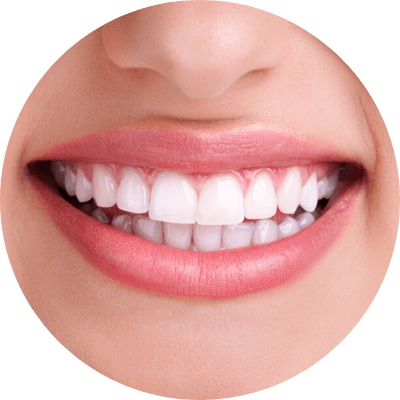Red Wine Teeth Stains: Ageing (Dis)Gracefully
Red Wine Teeth Stains: Ageing (Dis)Gracefully

Red red wine
You make me feel so fine
You keep me rocking all of the time
Red red wine …
Most likely it’s the 1983 UB40 cover of songwriter Neil Diamond’s ‘Red Red Wine’ that comes to mind, reading those lyrics. It was their first number one UK hit that year; its 1988 re-release reached the Billboard Hot 100 top spot.
Domaine Leroy was founded that year in the Côte de Nuits region of Burgundy. If you were canny enough to buy a bottle of Musigny Grand Cru and merry enough to forget you had it, there’s a dusty fifty thousand Aussie bucks somewhere in your house.
Now that’s red wine with teeth.
Enough to give you teeth with red wine stains. Especially if like most drinkers, your chance of brushing your teeth before bed decreases with each glass you imbibe. That’s why we have professional teeth whitening treatments here in Bacchus Marsh – because Bacchus was the Roman god of wine, and Bacchanalian rites occur in our town, at the pub mostly, just like anywhere else.
Neil Diamond originally released his song in 1967. By 1969 Tony Tribe’s reggae version was #46 on the UK charts, unknowingly waiting to inspire those Birmingham unemployment benefit form recipients less than twenty years later.
That’s the thing about red wine, it gets better with age. Stains teeth easier with age too.
Apparently we don’t age better with it; although the French and Italians would argue the point – over a couple of good bottles of red.
There’s so much about ageing we don’t get to choose. The slowing metabolism, the declining .. everything.. it feels good to have some control over part of the process, and seize it.
Like the day, or a bottle of Beaujolais.
An Aussie Shiraz is all of those things and maybe we drink it in the hope we’ll take on those mighty attributes. With all the potent potions, elixirs, philtres and brews that spill through the fairytales of childhood, into the universe of the Marvel Universe, pottering around in Harry Potter and craftily crafted in Minecraft, we believe it.
Shakespeare did.
A Midsummer Night’s Dream, Romeo and Juliet, Hamlet … lovers are seduced, power gained, and characters kill themselves and their enemies with them. There’s nothing more ensconced in memory from Macbeth than the incantation of the Three Witches, “Double, double toil and trouble; fire burn and cauldron bubble” … “Fillet of a fenny snake, in the cauldron boil and bake, eye of newt and toe of frog, wool of bat and tongue of dog..” (Act 1, Scene 4.)
As we age, it’s not so much the tongue of dog we’re interested in, as the hair.
As a hangover cure the ‘hair of the dog’ works – as a cocktail. Whisked whiskey, single cream and honey. Substitute the whiskey and it could be a health-giving protein drink, but vodka wouldn’t make it taste as good.
‘Hangover’ as a term for alcohol-induced misery has only been in use since 1904. Prior to that it referred only to the unfinished business of business: the decisions still to be made, monies that remained unpaid; any remainder or after-effect related to trade or commerce.
2024 will be the 120th anniversary of the hangover as we know it, so break out the Sassicaia!
The celebration is for the term as we know it; certainly not the condition. It’s a state of being that humans have known about for at least 3,000 years – ironically the same amount of time every one of them lasts.
One of the first recorded descriptions of a hangover is in the Indian text of vedic medicine, the Susruta Samhita, identified as ‘paramada’. It notes that it is a post-imbibing ailment characterised by head and joint pain, a heaviness in the body and is without cure.
Naturally, the ancient Romans knew about it. (They knew about everything).
Pliny the Elder, (Gaius Plinius Secundus, circa 23 AD – 79 AD) amid commanding the army and navy of the Roman Empire, philosophising, and studying the laws of nature and the nature of law, wrote not only about grammar, the history of Rome and a biography of Pubilius Pomponius Secundus (who wasn’t even his dad) but also an encyclopaedic volume of 37 books entitled Naturalis Historia (Natural History).

Although uneven in its accuracy (who cares – he was a very busy young man) Naturalis Historia was the authority on all matters of science until the Middle Ages, and remains the largest single work from the Byzantine Empire to still exist.
As the consummate overachiever, Pliny the Elder’s workaholism may very well have worked with the pleasures of drink.
His suggested hangover cure was two raw owl eggs in wine. (Possibly to wise up to the overindulgence, with a bit of added punishment). His alternative remedy of decapitating a canary and frying it with a little salt and pepper seems a clear case of projection.
All in all, as a species we’ve been hitting the bottle before it was even in a bottle. Our alcohol overconsumption spans about 10,000 years. (Or three-and-a-third hangovers for anyone over the age of 35.)
Feeling ancient the morning after, is literally ancient history.
It’s even in the Old Testament, if Saturday night wines have precluded any church attendance. Extensive research has revealed that uttering the name of the Father and the Son numerous times upon waking and actually seeing the Holy Ghost in the bathroom, doesn’t count as attending to religious service.
No wonder there are scholarly studies of the Good Book; it’s all so confusing. Ephesians 5:8 states, “And do not get drunk with wine, for that is debauchery, but be filled with the Spirit” without even saying which one. To cite part of Proverbs 23:29-35, “Do not look at wine when it is red, when it sparkles in the cup and goes down smoothly. In the end it bites like a serpent and stings like an adder…”
No mention whatsoever of the unholy curse of Blue Nun – which is white, just to add to the mayhem.
It’s enough to drive you to drink were it not for RBT.
Which is why booze buses … I mean delivery … was invented, and it’s so complex now, statistically it’s broken into six categories. Fortunately, and statistically, that’s all that’s broken – the bottles remain intact.
Often there are terms and conditions on alcohol deliveries: for one such service, there is an order limit for a single transaction, although no number to the number of those single transactions.
Indeed, it would be completely un-Australian to have to make a second phone call and read out those credit card details more than once for 10 cases of beer, 36 bottles of wine and 24 spirit ‘items’.
Those spirit items aren’t specified. Holy Spirit, Holy Ghost, Bloody Mary, Flying Dutchman and the Ghost of Christmas Past only count for five; so who knows if the spirit stuff is on the level. Whoever answered the phone was no help at all and the whole thing felt like a load of BWS.
Honestly, I almost lost my Tempranillo. Gamay a good Burgundy or a cabinet of Cabernet Sauvignon. There are red wine teeth to take care of. By the glass, before bed before they’re in a glass beside it.
Note: All content and media on the Bacchus Marsh Dental House website and social media channels are created and published online for informational purposes only. It is not intended to be a substitute for professional medical advice and should not be relied on as health or personal advice.
Services we mentioned:
Related Articles
Our Physical Sense of Self Is A Construct. Can That Impact Cosmetic Dentistry?
A warning to readers this article contains content relevant to concerns about such things as an inner life. The fact that this can and does influence outer life issues like cosmetic appearances is no idle anomaly. Our physical sense of self is a construct. Can that...
Is Periodontal Disease A Professionally Perpetuated Prevarication?
It’s a challenging question to ask whether periodontal disease is a professionally perpetuated prevarication or not, particularly if you have it. Tooth movement, bone loss and the inflammation of this gum disease eventually take away the clarity of speech, and the...
Your Teeth & Mental Health: The Surprising Connections
Anybody who has had serious toothache will not be surprised to find that there is a very real correlation involving our teeth and our mental health. Pain around our teeth and gums is hard to ignore and the nerve pathways link it to the overall state of our wellbeing....
Oral Bacteria: The Artery-Clogging Killer
How does Oral Bacteria cause heart disease? Who is most at risk? How can you prevent oral bacteria from being an artery-clogging killer? …














